Media | Articles
Sidecar racing is not for the faint of heart
I ’m not going to lie, Brian, I got lost.”
That’s not a sentence I thought would ever come out of my mouth when I began racing motorcycles. My only consolation for saying something that sounded so profoundly stupid was a knowing nod from Brian’s wife Tammy. She would understand; it was her place I had taken for the last 15 minutes aboard a black-red-white motorcycle sidecar as Brian and I lapped Blackhawk Farms raceway. “Yeah, that can happen.” Another nod. Maybe the role of a sidecar “monkey” was even crazier than I had expected.
Like a dozen or so adventures before it, this one began as I was holding a red Solo cup, into which a fellow—and now forgotten—racer was pouring free whiskey. This was a decent-sized gathering onto which I had stumbled into while returning from the track showers. Turns out the sidecar racers at Blackhawk Farms had another plan. As I mingled with the bench-racers, I watched one of the few folks who weren’t drinking as they dialed in a few adjustments to an inline-four-powered sidecar rig.
“I’m not going to lie, being monkey kinda looks fun sometimes.”
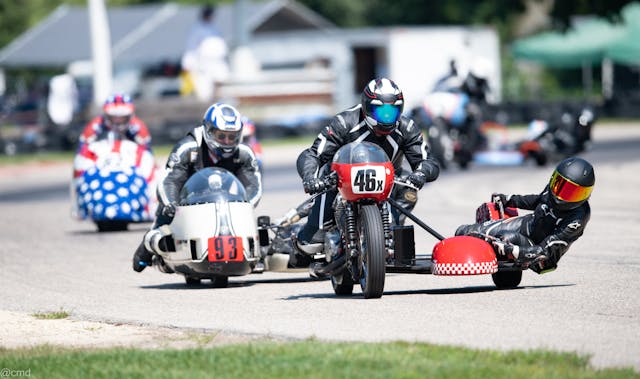
The group pounced. Brian Rammer was first to offer me a “ride” during the next day’s practice session. He said he would drop by my paddock spot and review a few things before we went out in group five right before lunch—It should be no big deal. With dozens of laps at Blackhawk under my belt from that weekend, let alone from the year prior, I believed him.
Marketplace
Buy and sell classics with confidence
During the early practice sessions Saturday, I did a couple hot laps on my SV650 to get my blood flowing and shake out a couple minor changes to the bike. Back at the pits, I looked up to see a Yamaha-powered sidecar rig. A smiling face looked up from atop the comically low series of tubes surrounding the bike’s engine.
“You still want to do this?”
First, we had to divvy up tasks. Brian might hold the handlebars, but he was only responsible for throttle and brakes. Steering was up to me. If I was in the wrong place at the wrong time, the bike would understeer right off the track. Our fate might not be that dramatic at the 50–60 percent pace he would be running, but things wouldn’t end well.
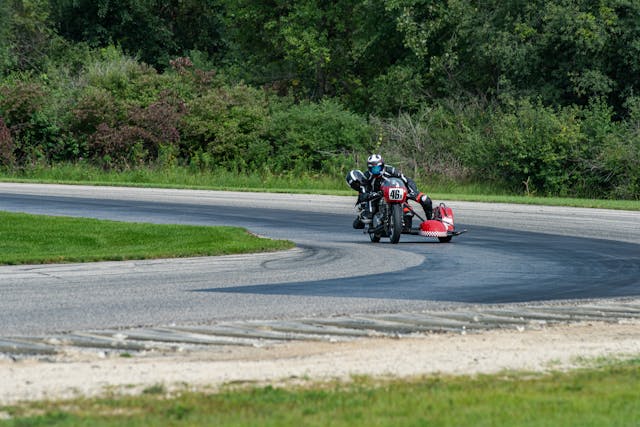
Next was communication, a three-signal system. If I was comfortable and wanted to go faster, I would put my hand in front of his handlebars and point up. A downward point meant “slow down.” Tapping my hand on the top of my helmet translated as: “We are done here, please take me home.”
Third and final tip was, appropriately, the rule of three: As a monkey, I should always have three points of contact with the rig. Brian warned me that, as I shifted from one side of the bike to the other, I would be tempted to overlook the various hand holds and rely on the wind to brace me; but if I released my grip, I’d soon put my Alpinestars suit to the test. Got it.
The conversation drifted away from track riding. Before we knew it, the speaker in the pits crackled. First call for practice group five. The routine began: Back protector, ear plugs, suit zipper, gloves, helmet. This time, I didn’t finish by straddling a bike; I knelt down and crawled into a roughly three-foot by three-foot, lightly padded “sidecar.” I shifted my weight all the way to the back to keep the steering system from flopping wildly as we pointed towards pit out and slowly rumbled down the front straight. Brian had already explained the track-oriented geometry of this rig: Bike and sidecar worked best at speed, so I shouldn’t be thrown by their goofy behavior as we left the paddock.
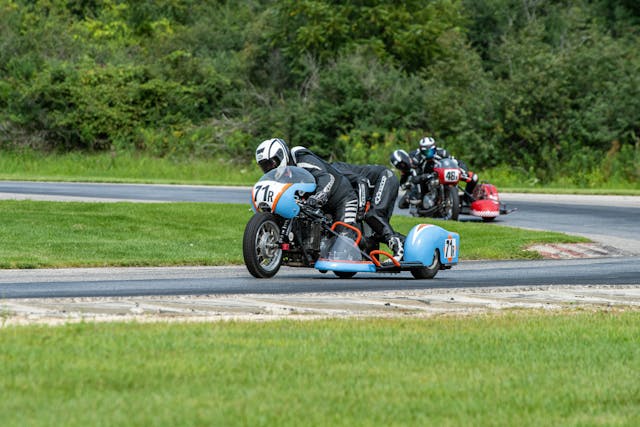
Brian hit the gas as we started down the blend line of Blackhawk Farms’ front straight. The acceleration took me off guard for a moment, mainly because I was not in control of it. The blend line led immediately into turn one, a near 90-degree right hander. It was my first call to do my job: With my right hand, I found the grab handle behind Brian’s right foot, locking my grip before shifting my entire upper body so that my weight centered on or to the inside of the rear tire. About when I felt settled, it was time to move again. The race-tuned 650cc twin spun up as we exited turn one and thundered toward the left kink, which provided a slight checkup before a big, sweeping right hander.
Two was a fast little turn that didn’t require me to do much more than return to a neutral position. I knew this because one of the other, more experienced sidecar monkeys had dropped by my pit area after Brian’s rundown in the morning to offer turn-by-turn advice. Off to the big sweeping right. Locking my grip into the same holds as I had in turn one, I took a deep breath and tried not to gorilla grip the steel tubing. As when piloting a motorcycle, a death grip saps energy—I needed to be strong but loose.
The Yamaha’s revs rose again we exited turn three and pointed towards 3A. (Blackhawk named its corners weirdly, don’t be mad at me.) The slowest corner on the track, 3A is a tight right hander that links to a quick complex of left turns. Overwhelmed with where I needed to be and what Brian was doing and where my handholds were and when other racers might appear, I lost my mental location. My flustered brain decided it was time to fling myself to the left and counterweight for a left-hand corner—but I was wrong. The next turn was right, not left. Remember when Brian said I was the steering, and if I placed my weight wrong, the thing wouldn’t turn?
Luckily, he could feel me preparing for the wrong position. Before I got too far, his left hand signaled a flurry of gestures, which I interpreted as Hey idiot, what are you doing? You’re supposed to be over here. And hurry up. (See below.)
We tiptoed through 3A and into the next stretch of lefts, where I finally got to put my weight to work. I hung out to the left of the rig, becoming the counterweight my six-foot, 150-pound frame was never designed to be. During the rest of the lap, I felt like I was finally tuning in. Then, carrying a good amount of speed through the final right hander, Brian opened the throttle onto the front stretch. I was floored—almost literally. Neither acceleration nor speed was more aggressive than it was on the SV650 I was racing that weekend, but once again the lack of control was disorienting. Rolling into our second lap, I had the chance to clean up my mistakes and … I didn’t. I still got lost. Turn 3A arrived and I shifted the wrong way again. Brian signaled the same message, prompting my hasty correction.
Not until we were back in the pits after the 15-minute practice session did I finally realize why I struggling: All of my visual reference marks had changed. My entire perspective of the track had shifted because I was sitting significantly lower in the sidecar than I would on a bike. Plus, Brian and the motorcycle blocked my view to my right. All the cues I would use to locate myself on track were in the wrong places, even if I could see them—and, most of the time, I couldn’t.
It was an interesting reminder of just how important those personal markers are. When I first starting track riding I read a lot about picking out these markers and how they were critical in turning consistent laps. Little did I know how much those same markers helped in turning safe laps. Life isn’t a video game where the race line is projected onto the track.
Of all the decisions Brian made, his smartest was removing the bike’s transponder for our practice session. Even without the data I know we were slow. I began to realize the amount of time it would take to become a well-connected team. The near constant adjustment to what each other are doing—without vocal communication—is a dance, and I don’t know I could ever truly master its steps. Brian and his wife have years and hundreds of laps together but, as Tammy pointed out afterwards, there is only so much you can be told about being a monkey. You just have to do it.
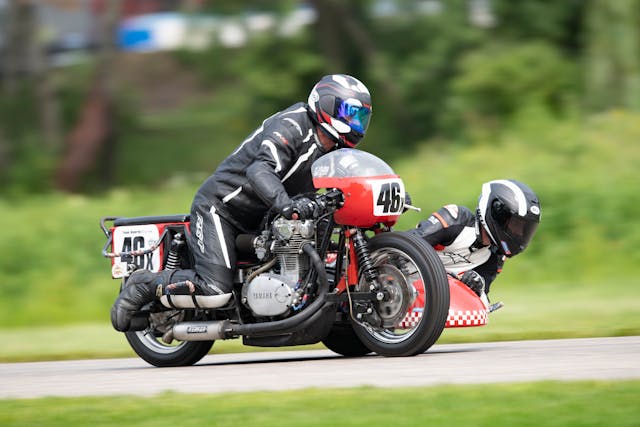
Check out the Hagerty Media homepage so you don’t miss a single story, or better yet, bookmark it.







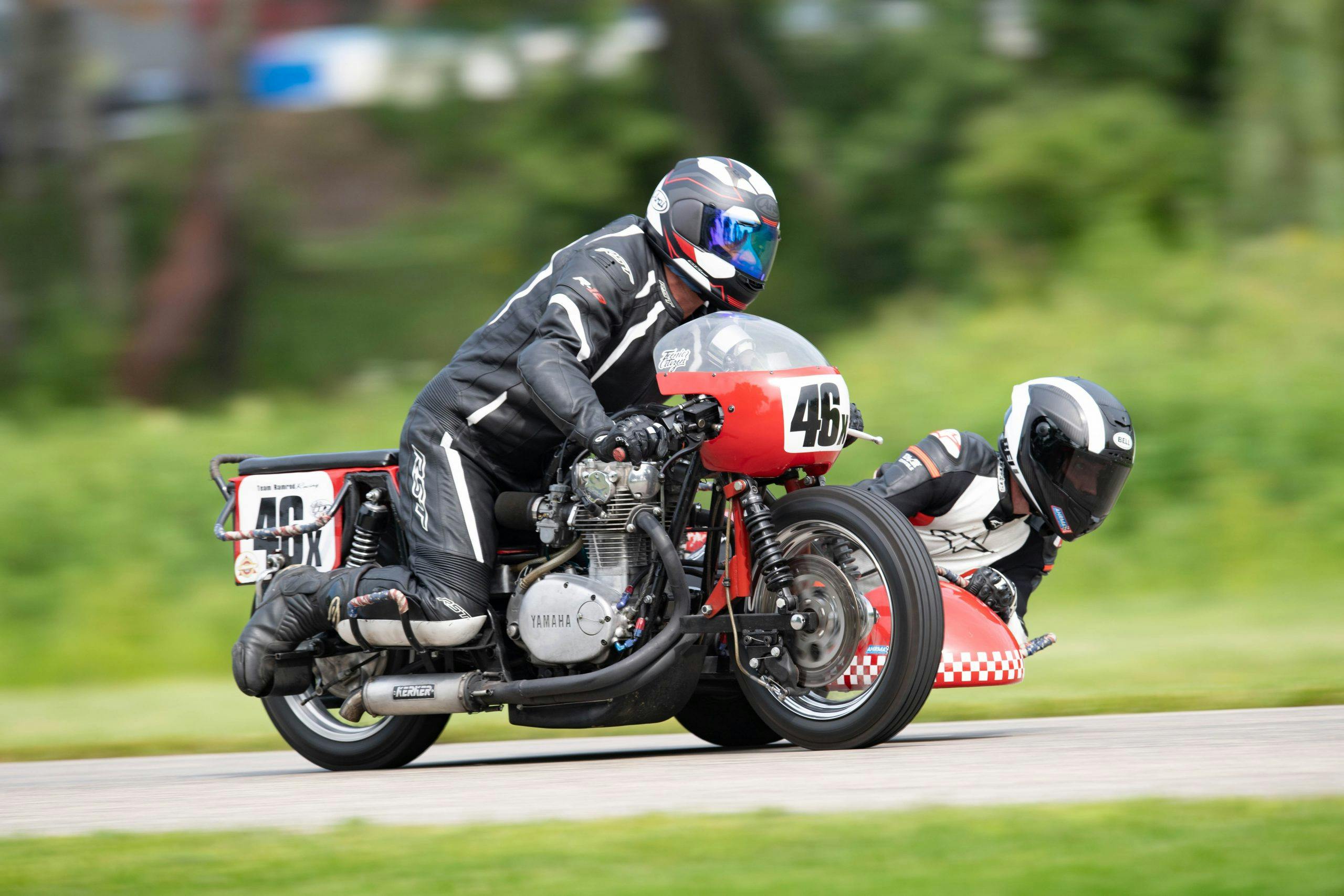
The person in the side car is one of the most trusting people outside a rally co pilot. You really are putting your life in someone else’s hands.
One of the best lessons I ever got was sitting in the left seat of a right hand drive car with a pro rally driver at the wheel on an autocross track. Everything that he was doing differently from when I was driving was only slightly different but the perspective from the left side of the car was way more helpful than from the right seat. I can imagine the view, or lack thereof from all different heights must be very confusing even on the most familiar track.
“Nutty” is the safest thing I can say here. Pretty crazy job, not sure I would be brave enough for it..
Getting a chance to be a sidecar monkey has been a Bucket List item for me for a long time. But, I realize it will not happen as I’m getting older and less flexible by the year, and my knees would be screaming partway into the 1st lap.
Great article, thanks!
Don’t jump to that conclusion just yet! The big wheel sidecars don’t require nearly the same physical gymnastics to get around the track and are still quite the thrill from what I hear. Don’t mistake speed for thrill. Even at a more modest pace it is still really fun to work as a team.
So.. I have limited experience as the passenger for Tim Joyce, but I am confident I do not steer the rig. My input definitively ensures we go into corners and out of corners at optimal speed. The pilot does have total control on brakes and throttle, but acceleration or braking can’t happen without me in the place he needs me. Nothing about steering, acceleration or braking is a him or me it is the team. At the end of the day nothing about this happens without us relying on each other at 100 miles an hour.
Hey Renee! That might come down to the chassis for each rig. The geometry and setup can change the handling dynamics significantly and having never been on Tim’s rig I can’t speak to the exact difference but I don’t doubt there is significant differences between the rigs that take the track at an AHRMA weekend. The couple times I was in the wrong place at turn-in the rig clearly did not want to take the corner and understeered enough that Brian was tapping me on the helmet to let me know I was way wrong.
Kyle, we race the same class with Tammy and Brian and were at Blackhawk that weekend. Again, all three: acceleration, steering and brake all come down to each other.